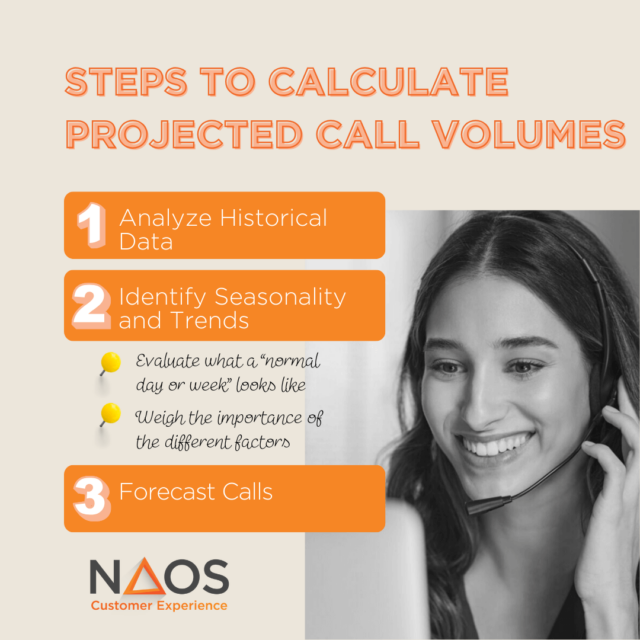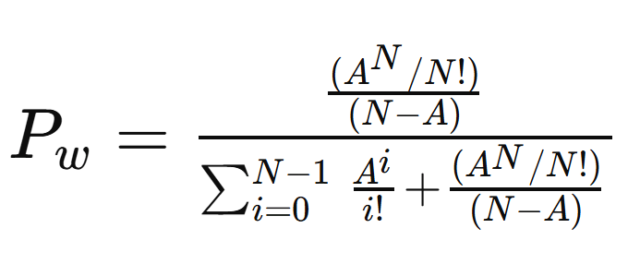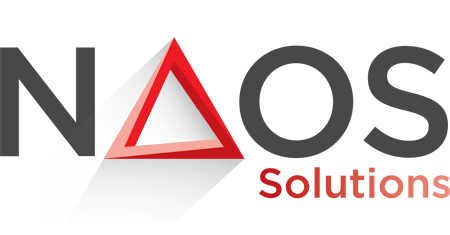Call centers are the backbone of modern customer service. But running a smooth operation requires more than answering calls—it requires predicting them.
That’s where call center forecasting comes in. Call center forecasting predicts future call volumes using historical data and seasonal trends.

The question is, why to bother? Two words: efficiency and cost. Accurate forecasting lets you staff your call center just right. Not enough agents and you risk long wait times and frustrated customers. Too many, and you’re burning money on idle hands.
This guide will show you how to master call center forecasting.
UNDERSTANDING CALL CENTER FORECASTING
Call center forecasting is necessary to predict future call volumes based on historical data and seasonal factors. When done right, it can help you:
- Improve SLAs: With precise forecasts, you can schedule the correct number of agents to handle incoming calls. This allows for shorter wait times and better service level agreements (SLAs).
- Optimize Costs: Call center forecasting helps you avoid overstaffing or understaffing, reducing labor costs and allocating resources more efficiently.
- Reduce Workforce-Related Inefficiencies: Accurate forecasts help you plan for peak and off-peak periods, minimizing idle time and overtime.
Accurate forecasting helps in-house customer service departments by improving scheduling, optimizing costs, and enhancing efficiency. It is also crucial to prepare to outsource contact center operations.
For a customer service department seeking an outsourced contact center, precise forecasting allows you to build more effective Requests for Proposals (RFPs). By clearly defining your projected call volumes and operational needs, you enable potential outsourcing vendors to propose tailored staffing models and solutions that align with your business objectives. This ensures you select the right partner to meet your service level expectations and achieve your strategic goals.
KEY STEPS TO CALCULATE PROJECTED CALL VOLUMES
Predicting future call volumes isn’t magic, but it does help you understand the past and make educated guesses about the future. Here are the key steps to get you there:
Step 1: Analyze Historical Data
The foundation of accurate forecasting lies in understanding your historical data. Here’s how to approach it:
Gather Data from Multiple Sources
Start by collecting data from systems like:
- ACD (Automatic Call Distributor) Reports: Analyze call arrival patterns and durations.
- CRM Data: Study customer interactions and behavior over time.
- Customer Portfolio: Segment customers by type and understand their call frequency.
- Sales and Production Issues: Review the history of outages or product recalls that have spiked call volumes during the considered period.
- IT or Telecom-Related Matters: Consider the system downtimes or upgrades that may have impacted the call demand.
- External and Environmental Factors: Monitor economic, political, or environmental conditions that could have disrupted customer behavior and call patterns.
Cover an Adequate Time Frame
Use at least 12 months of data to identify seasonal patterns.
For greater reliability, analyze 2–3 years of data to capture anomalies, industry trends, and evolving customer behavior.
Break the Data into Segments
Organize the data into meaningful segments, such as by:
- Day of the week
- Time of day
- Customer demographics
Visualize Data for Trends
Create charts and graphs using tools like Excel or BI platforms. Look for recurring peaks, drops, and unusual spikes.

Step 2: Identify Seasonality and Trends
Not all patterns and trends are created equal. Here’s how to refine your analysis:
Spot Patterns and Trends
Identify repeating cycles (e.g., monthly or quarterly peaks). Account for external influences, like holidays or economic events.
Evaluating What a “Normal Day or Week” Looks Like
- Define Your Baseline:
A “normal day or week” represents periods with minimal external disruptions, allowing you to establish a baseline for call volumes. Follow these steps:
-
- Filter Out Anomalies: Exclude data from holidays, promotional events, product launches, or unplanned outages. Use historical records or team input to identify these anomaly periods.
- Identify Stable Periods: Look for time frames with consistent call volumes (e.g., weeks without significant external influences). These periods can serve as your baseline.
- Break Down the Data:
Analyze the data at granular levels to identify typical patterns:
-
- By Hour: What does call volume look like during regular business hours?
- By Day of the Week: Are Mondays or Fridays busier than other days?
- By Month: What are the average weekly call volumes for each month?
Use this breakdown for variations, like busier mornings or quieter weekends.
- Normalize the Data:
To calculate an average “normal” day or week:
- Aggregate Daily/Weekly Data: Combine call volumes from stable periods across multiple months to calculate the average.
- Remove Outliers: Use statistical methods (e.g., standard deviation) to filter out unusually high or low values that skew the average.
- Adjust for Differences Across Months: Recognize that “normal” in January may differ from “normal” in July due to natural seasonality.
- Visualize the Results:
Plot these averages on a graph to visualize the “normal” call flow for each day and week of the year. For example:
-
- A bar graph showing average daily call volumes by month.
- A line chart illustrating fluctuations within a typical week.
Weigh the Importance of Different Factors
Once you’ve established what “normal” looks like, begin attributing variations:
- Compare your baseline with:
- Seasonality: holidays, back-to-school seasons, Ramadan, or summer downtime.
- Marketing Activities: campaigns, product launches, or advertising spikes.
- IT and Production Issues: recalls, delays, or new product rollouts.
- Quantify deviations from the baseline and assess how much each factor influences these deviations.
For example, let’s say you’re analyzing July call distribution data for customer service in the USA:
- Exclude Independence Day or other event-related spikes.
- Find weeks without promotions or downtime to calculate the average daily call volume.
- Use this data as the baseline to evaluate how a mid-month product launch impacted call volumes.
By first identifying and normalizing “normal” patterns, you can confidently attribute weights to influencing factors like seasonality, promotions, and external events.

Step 3: Collaborate Across Teams To Forecast Calls
Forecasting isn’t a solo task—engage key departments to improve accuracy:
- Engage Marketing Teams: Gather insights on upcoming campaigns, events, or promotions that could influence call volumes.
- Consult Sales Teams: Understand new product launches, sales targets, or customer onboarding plans that may impact call volume.
- Coordinate with IT Teams: Factor in system updates, downtime schedules, or telecom upgrades that could disrupt service or change call demand.
- Involve Customer Service Teams: Leverage feedback on recurring customer concerns, peak inquiry times, or operational bottlenecks.
This collaborative approach ensures that your forecasting reflects a holistic view of your organization’s activities.
COMMONLY USED FORECASTING MODELS
Now that you know the steps, let’s discuss the different models you can use to make your forecasts come alive. Here are the most common options.
Time series forecasting techniques
Time series forecasting techniques rely on historical data to predict future call volumes.
- Moving Averages: A simple but effective method that smooths out fluctuations in data. It averages historical data points to understand the call center’s overall performance.
- Appropriate Use: Best suited for data without strong seasonal patterns, as it helps understand the overall trend by mitigating random variations.
- Exponential Smoothing: This technique assigns exponentially decreasing weights to past observations, giving more importance to recent data.
- Visualize a line graph where recent call volumes influence the forecasted trend more significantly than older data points, resulting in a line that adapts quickly to changes.
- Appropriate Use: Ideal for data with no clear trend or seasonal pattern, allowing the model to adjust to data changes quickly.
- ARIMA (Autoregressive Integrated Moving Average): A sophisticated model that combines autoregression, differencing, and moving averages to handle various data patterns, including trends and seasonality.
- Consider a time series plot where ARIMA models the relationship between past values and the current value, accounting for trends and repeating patterns to forecast future call volumes.
- Appropriate Use: Suitable for short-term forecasting when data exhibits complex patterns, including trends and seasonality.
Regression analysis
Regression analysis defines relationships between call volumes and other factors, such as marketing campaigns or holidays.
For example, you can predict increased call volumes during a significant marketing campaign or a product launch. This model works best when clear variables can predict call volume.
The Erlang C model
The Erlang C model is a mathematical formula that determines the probability that a call must wait before being answered based on call arrival rates, average handling time, and the number of agents available.
Erlang C Formula:

Where:
- Pw = Probability that a call has to wait
- A = Traffic intensity in Erlangs (calculated as call arrival rate multiplied by average handling time)
- N = Number of agents
Suppose a call center receives 100 calls per hour and handles them in an average of 3 minutes (0.05 hours).
Traffic intensity A = 100 × 0.05 = 5 Erlangs (5 call hours of traffic per hour)
This means that the minimum number of agents in the call center would be 5.
The Erlang C model is precise. However, it assumes that calls are distributed equally during the hour.
Appropriate Use: The Erlang C model is beneficial for determining staffing requirements to meet specific service levels, especially in environments with random call arrivals and when aiming to minimize customer wait times.
We found this free Erlang Calculator quite helpful.

INTEGRATING FORECASTING INTO WORKFORCE PLANNING
Effective workforce management (WFM) in a call center extends beyond accurate call forecasting. For accurate workforce planning, you must consider other factors, such as agent break distribution over the day and the absenteeism rate.
To ensure optimal performance and service quality, it’s essential to integrate several key elements into your WFM strategy:
1. Real-Time Adherence Monitoring
Monitoring agents’ adherence to their schedules in real-time allows for immediate adjustments, ensuring that staffing levels meet actual demand. This proactive approach helps maintain service levels and reduces customer wait times.
2. Continuous Training and Development
Regular training programs keep agents updated on product knowledge and customer service techniques, enabling them to handle a variety of call scenarios effectively. Investing in development also aids in employee retention and performance.
3. Technology Integration
Advanced WFM software can automate scheduling, forecasting, and reporting processes, increasing efficiency and accuracy. Integration with other systems, such as Customer Relationship Management (CRM) tools, provides a holistic view of operations.
By incorporating these elements alongside accurate call forecasting, call centers can develop a comprehensive WFM strategy that enhances operational efficiency, employee satisfaction, and customer experience.
FORECASTING INSIGHTS FOR BUILDING A WINNING RFP
A well-crafted RFP is your key to finding the perfect outsourcing partner. Accurate call volume forecasts can help you create a compelling RFP that attracts top-tier vendors and guarantees a successful partnership.
Key Metrics to Include
To paint a clear picture for potential vendors, don’t forget to include these key metrics in your RFP:
- Average Handle Time (AHT): AHT reveals how long an agent spends on average on each call. A lower AHT indicates efficient handling of customer inquiries. Historical AHT data and future projections will help your vendors understand the complexity of your call volume.
- Call Volume Projections: You’ll also need to share your forecasted call volumes for the upcoming period, focusing on peak and off-peak hours. These details help your vendors plan their staffing accordingly and avoid service disruptions.
- Peak Hours: What are the specific times of day and days of the week when call volumes in your call center are highest? This KPI will help your vendors allocate resources effectively and ensure enough coverage during peak periods.
- Required Service Levels: Most importantly, you’ll need to clearly define your expected service levels, such as average wait times and abandonment rates. These metrics help vendors understand your quality standards and tailor their proposals as needed.

Defining Expectations
Clear expectations set the stage for a successful partnership. Luckily, you have all the forecasts to articulate your specific needs to a potential vendor. Here are the three factors you shouldn’t forget to outline:
- SLAs: Clearly state your desired SLAs, such as average wait times, abandonment rates, and first-call resolution rates. For example, you might aim for an average wait time of less than 30 seconds and an abandonment rate below 5%.
- Agent Expertise: Specify the required skills and experience levels for your agents. You’ll also need to mention your expected language proficiency, technical knowledge, and customer service skills from the agents.
- Scalability: Outline your anticipated growth or seasonal fluctuations and the need for flexible staffing solutions. As we mentioned, you may expect a massive increase in call volume during specific marketing campaigns or holiday seasons.
Budget Alignment
Accurate forecasts also help you set more realistic budget expectations. The more detailed your projections are, the more likely your vendor will tailor their proposals to fit your budget constraints.
You can ensure budget alignment by sharing historical call volume data to provide context for your vendor. For instance, you can highlight any peak seasons you’ve had in the past and how much it has cost to keep up with them.
This is also the time to outline your anticipated call volume growth and the corresponding budget implications. You want your vendors to understand the long-term financial commitment of working for you.
Finally, it never hurts to try to spend less. You can offer strategies that may have worked for you in the past, such as implementing self-service options or optimizing agent schedules. These measures can help you maximize your budget without compromising your desired outcomes.
Scenario Planning
Your RFP is incomplete without thoughtful scenario planning. To accommodate sudden shifts in demand, prepare for the best, worst, and average-case scenarios.
First and foremost, make sure the outsourcer has contingency plans in place. What will you do during natural disasters or system outages, and how will your vendors mitigate their impact?
Beyond disruptive cases, you need to outline potential growth scenarios and the need for scalable solutions. For example, you may anticipate a product launch that could significantly increase call volume. Lastly, don’t forget to ask your vendors how they’ll adjust their staffing and pricing models to any potential economic downturns.
TOOLS AND TECHNOLOGIES TO ENHANCE CALL CENTER FORECASTING
Forecasting doesn’t have to be a hit or miss. Today, you can access many powerful tools and technologies to make your predictions more accurate and reliable.
For instance, forecasting software like Oracle and IBM Cognos Planning can automate the analysis of historical data, identify trends, and generate future forecasts. AI and machine learning algorithms like Google Cloud AI Platform and Amazon SageMaker take it further. They learn from past data to make even smarter predictions.
CONCLUSION: TURNING FORECASTING INTO ACTION
Remember, the future of your call center lies in the power of data and intelligent forecasting. So, why wait? You can start harnessing the power of forecasting now. Connect with industry-leading call center outsourcing vendors through NAOS Solutions today.

